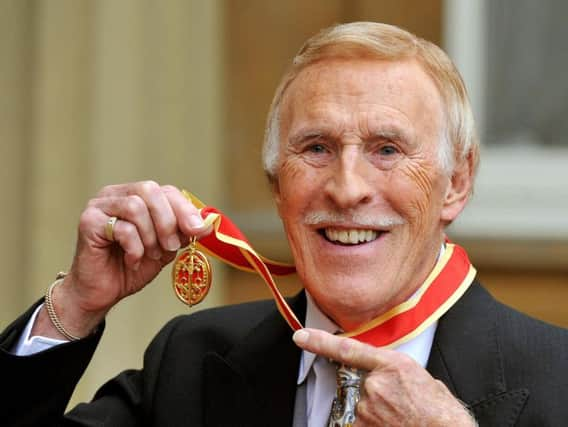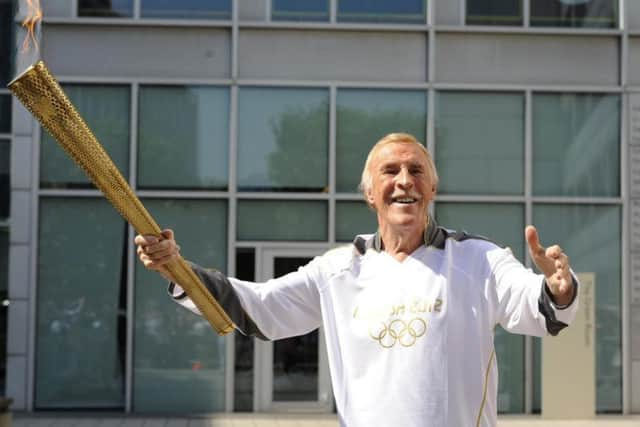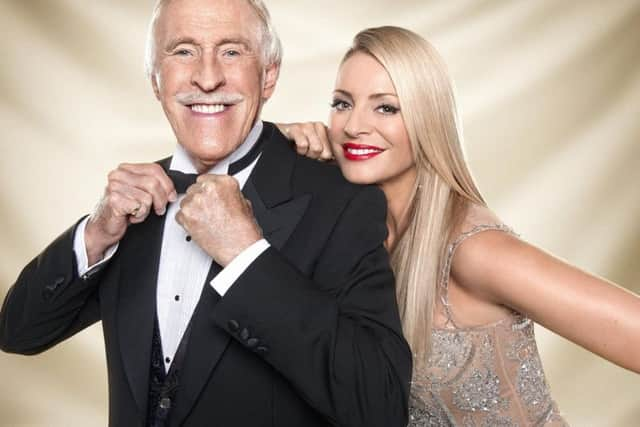Goodbye to Sir Bruce Forsyth, Britain's heavyweight of light entertainment


Bruce Forsyth, who died today had served a long apprenticeship in front of the naked chorus line at London’s Windmill Theatre and at the down-at-heel seaside venues on the south-east coast. But his career was going nowhere.
If something didn’t turn up, he confided to his fellow Windmill comic, the Leeds-born writer Barry Cryer, he planned to turn it in and open a little cigarette shop.
Advertisement
Hide AdAdvertisement
Hide AdSomething did turn up when ATV, the most powerful of the early ITV companies, fell out with its star comic, the trilby-hatted Tommy Trinder, host of its biggest show, Sunday Night at the London Palladium.
After trying out a few alternatives, Forsyth was named his permanent replacement, and he never looked back.
“What happened to the shop?” asked Cryer a few months later, when their paths crossed on a London street.
“Postponed,” said Forsyth.
Born in Middlesex to middle-class parents who ran a car repair operation, he showed little interest in the family business, nor in that of his ancestors, two of whom had been renowned botanists and one, William Forsyth, a founding member of the Royal Horticultural Society, after whom the plant forsythia was named.
Advertisement
Hide AdAdvertisement
Hide Ad

Instead, he spent his spare minutes watching Fred Astaire at the pictures, and tried, at 14, to emulate him with a song, dance and accordion act called Boy Bruce, the Mighty Atom.
After national service with the RAF, he went back on the road and began a decade-long toil through the lower ranks of Fifties showbusiness... until ATV rescued him.
The Palladium show made him in an instant one of the most popular TV stars in the country, never more so than when he and Norman Wisdom performed an entire 60-minutes by themselves while the actors’ union, Equity, was on strike.
With a chin that looked as if it could pick pickles from a jar, and sporting a dinner suit whose distinctive satin trim cut through the dim, black-and-white picture, Forsyth was at once comedian, singer, dancer and game show host, marshalling the contestants on the primitive Beat The Clock segment that ATV had imported from America.
Advertisement
Hide AdAdvertisement
Hide Ad

He anchored the show from 1958 to 1960 and for a further spell from 1961. At its peak, with Cliff Richard and the Shadows topping the bill, more than 20 million people tuned in.
Yet, so long as he was constrained to introducing the acts and performing just a weekly song and dance number, the show was not truly his own. He grew restless, and after the format was relaunched with what was then the alternative comedy of a young Jimmy Tarbuck, Forsyth went in search of a more distinctive vehicle.
He starred in a raft of variety specials, some with Frankie Howerd, others by himself, the later ones produced by the new Yorkshire TV franchise in Leeds. But, as he later freely admitted, his career was coasting when he took a call from the BBC’s variety head, Bill Cotton Jr.
Cotton had secured the rights to a Dutch game show called Één van de acht, or One of the Eight, He believed, with Beat The Clock in mind, that Forsyth would be the perfect host.
Advertisement
Hide AdAdvertisement
Hide Ad

Relaunched on Saturday nights on BBC1 as The Generation Game, the show became one of the enduring successes of the Seventies and beyond, and made Forsyth a household name even among viewers too young to remember his Palladium shows.
His marriage in 1973 to the show’s hostess, Anthea Redfern, whose dresses had begat the catch-phrase, “Give us a twirl”, was the country’s wedding of the year, and the tabloids had a field day reporting the break-up of his first marriage to Penny Calvert, whom he had met back at the Windmill.
It was to be the first of several fall-outs with the press - the biggest of which centred on the relative failure of Bruce Forsyth’s Big Night, a Saturday evening compendium mounted by London Weekend Television in 1978, in which he played host to Sammy Davis Jr and Bette Midler, among others.
It began a period of self-imposed exile to the Broadway stage. He had modest success there but failed to break through, and when in 1980 he returned to LWT, it was to take charge of the more modest game show, Play Your Cards Right.
Advertisement
Hide AdAdvertisement
Hide AdHis mastery of the quiz format typecast him for another two decades and sustained him through multiple series of Play Your Cards Right at Yorkshire TV, and You Bet!
But it was the influence of the comedian Paul Merton that would give Forsyth’s career its coda. Invited in 2003 to be guest host on Have I Got News For You, he brought the house down, and on the strength of his performance was invited to host a revival of the BBC’s old Come Dancing format, populated by celebrities and with the word Strictly before the title.


Ironically for a performer whose debut had coincided with the satire boom of the early Sixties, Forsyth had told Merton he didn’t know if his comedy would work with a satire” studio audience.
He married three times, finally to Wilnelia, Lady Forsyth-Johnson, a Puerto Rican former beauty queen. Their home right next to Wentworth golf course in Surrey, betrayed Forsyth’s other chief interest in life.
He had six children, nine grandchildren and three great-grandchildren. One of his daughters, Julie, was a member of the 1970s pop group, Guys ’n’ Dolls.